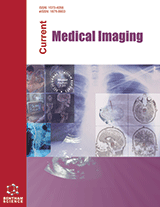
Abstract
Background: Computed tomography (CT) evaluation systematics has become necessary to eliminate the difference of opinion among radiologists in evaluating COVID-19 CT findings. Introduction: The objectives of this study were to evaluate the efficiency of CO-RADS scoring system in our patients with COVID-19 as well as to examine its correlation with clinical and laboratory findings.
Methods: The CO-RADS category of all patients included in the study was determined by a radiologist who did not know the rtRT-PCR test result of the patients, according to the Covid-19 reporting and data system of Mathias Prokop et al.
Results: A total of 1338 patients were included. CT findings were positive in 66.3%, with a mean CO-RADS score of 3,4 ± 1,7. 444 (33.1%) of the patients were in the CO-RADS 1-2, 894 (66.9%) were in the CO-RADS 3-5 group. There were positive correlations between CO-RADS score and age, CMI, hypertension, diabetes mellitus, chronic pulmonary diseases presence of symptoms, symptom duration, presence of cough, shortness of breath, malaise, CRP, and LDH, while CORADS score was negatively correlated with lymphocyte count. The results of the ROC analysis suggested that those with age ≥40 years, symptom duration >2 days, CMI score >1 and/or comorbid conditions were more likely to have a CO-RADS score of 3-5.
Conclusion: The CO-RADS classification system is a CT findings assessment system that can be used to diagnose COVID-19 in patients with symptoms of cough, shortness of breath, myalgia and fatigue for more than two days.
Keywords: COVID-19, SARS-CoV-2, pneumonia, CO-RADS, diagnostic imaging, tomography.
[http://dx.doi.org/10.2807/1560-7917.ES.2020.25.3.2000045] [PMID: 31992387]
[http://dx.doi.org/10.1148/radiol.2020200432] [PMID: 32073353]
[http://dx.doi.org/10.1148/radiol.2020200642] [PMID: 32101510]
[http://dx.doi.org/10.1148/radiol.2020201473] [PMID: 32339082]
[http://dx.doi.org/10.1148/radiol.2020200823] [PMID: 32155105]
[http://dx.doi.org/10.1016/j.cca.2020.03.032] [PMID: 32229107]
[http://dx.doi.org/10.4103/atm.ATM_165_20] [PMID: 32831937]
[http://dx.doi.org/10.1097/RTI.0000000000000524] [PMID: 32324653]
[http://dx.doi.org/10.3947/ic.2020.52.2.154] [PMID: 32537961]
[http://dx.doi.org/10.1016/S0140-6736(20)30211-7] [PMID: 32007143]
[http://dx.doi.org/10.1148/radiol.2020200843] [PMID: 32191587]
[http://dx.doi.org/10.1148/radiol.2020200463] [PMID: 32077789]
[http://dx.doi.org/10.5492/wjccm.v8.i5.74] [PMID: 31559145]
[http://dx.doi.org/10.1016/j.medmal.2020.03.007] [PMID: 32243911]
[http://dx.doi.org/10.1007/s00330-020-07050-x] [PMID: 32666316]
 34
34 1
1












